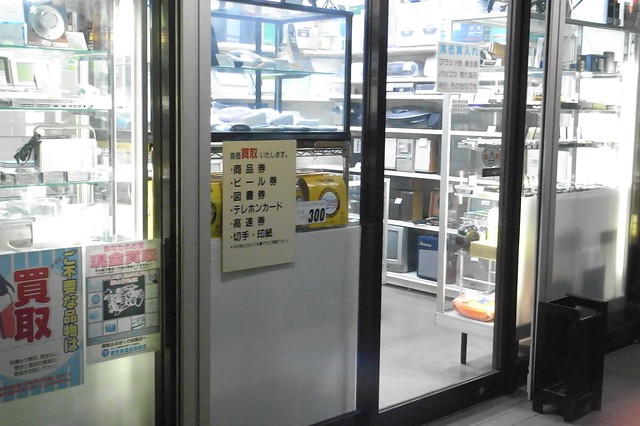
photo by Ryohei Noda
Minimalism and Dan-shari (getting rid of unnecessary household items) have been attracting more and more attentions in recent Japan. These ideas are based on the thought to enjoy everyday life only with truly necessary items by removing little gadgets that are not really needed. Among minimalists and people who do dan-shari, some go quite far by getting rid of seems-to-be-necessary home appliances, furniture and even clothes. Well, you may not be one of those minimalists and dan-shari people, but even so, there are some occasions that you need to dispose large items, like moving house or going back home. The easiest way to remove home appliances and furniture is just giving them away to someone, friends or someone you know. But this works only when the items are still in good condition. But what if no one wants those bulky stuff? How can we dispose unwanted home appliances and large furniture in Japan?
1.Dispose as bulky waste
As you know, the collection of domestic waste is managed by each local government in Japan. While many types of waste can be disposed, there are detailed regulations on how to dispose different type of wastes. Home appliances and household furniture can be collected in accordance with the regulation in each region. For example, the following items can be collected for a fee by Shinjuku-city in Tokyo, that has the largest population of foreign residents (fees are indicated within the brackets).
- Clothes container (400yen)
- Chair (400yen)
- Rag (<180cm x 90cm: 400yen, ≥180cm x 90cm: 800yen)
- Bicycle (800yen excluding electric bicycles)
- Electric fan (400yen)
- Vacuuming machine (400yen)
- Sofa (single: 800yen, there-seater: 2,000yen)
- Microwave oven (800yen)
- Chest drawer, book shelf and other box-shaped furniture (400yen, 800yen, 1,200yen, 2,000yen and 2,800yen according to the size)
Important!
Since the execution of Home Appliance Recycling Act in 1998, the disposal of air conditioner, TV, refrigerator, freezer, washing machine and clothes dryer as domestic waste is prohibited. These items are to be recycled in accordance with the regulation in each region.
Also, computers are not collected by local governments, as disposal of this item is also regulated under the Home Appliance Recycling Act.
How to book disposal of bulky waste
To dispose bulky wastes in Shinjuku city, you need to make a booking with “Bulky waste center” in advance. A booking can made over the phone or on the internet.
- Make a booking
- Purchase “bulky waste disposal ticket” at a designated shop, write down the booking number and collection date on the docket. Attach the docket on the item you wish to dispose (one docket on each item)
- Place the item in front of your house (in front of the building if you live in an apartment unit)
2. Use unwanted item collection service
Bulky waste collection by local governments is well organized, but you have to spend lots of time to prepare, for example, checking if your items meet requirements or purchasing dockets to pay fees. If you are in hurry and want to get rid of your stuff as soon as possible, you may want to use an unwanted item collection service. The fees and services significantly vary depending on service providers: some collect unwanted items for a few thousand yen but under certain conditions, while some collects whatever items you want to get rid of no matter of the condition of the items for fixed rate. Also, some service provider limit the size of consignment up to 2㎥ while others collect a truck load. For a single person, a truck load is more than enough most of the time.
- One light-weight truck load (up to 350kg): 10,000yen – 18,000yen
- 2t truck load: 30,000yen – 40,000yen
*Collection fee will be charged for certain items.
Unwanted item collection service provider in Tokyo
3. Take the items to recycle shop
Throwing away appliances and furniture that still can be used often associates with a little guilty feeling. Also, it is even better if you can sell such items and make some money so that you can save costs of moving house or going home. At such times, taking your belongings to recycle shop is a great idea. There are so many recycle shops, not just in Tokyo but across Japan. They buy used TVs, washing machines, computer, chest drawers, book shelves, books and clothes etc. Some shops do collection service as well. But there may be some conditions from them, such as year of manufacture for home appliances. It is recommended to inquire the shop for inspection, but you can also just bring your items in.
Recycle shops in Tokyo
Risaoku
Tokyo Recycle-ya
DOPELAND
Take care of environment
The proper way to remove your bulky wastes vary depending on type of the item and the reason to dispose the items. But if you can sell such items to someone else, that is the best way, of course. So, when you want to get rid of bulky items
- Try to find someone who want your items, then
- Take them to a recycle shop and see if they can buy your items, then
- Dispose unwanted or broken items as bully waste, or call an unwanted item collection service.
If you are in hurry, just calling a collection service is the easiest way, though it is costly. All the examples in this column refers to the regulations of Tokyo city. If you live in any other city, make sure to inquire your local city council for disposal of bulky wastes.
Related Article:
Air con, TV, Fridge and Washing Machine! What should we do when these gears are broken?
You got a new computer! So, what to do with your old one?
